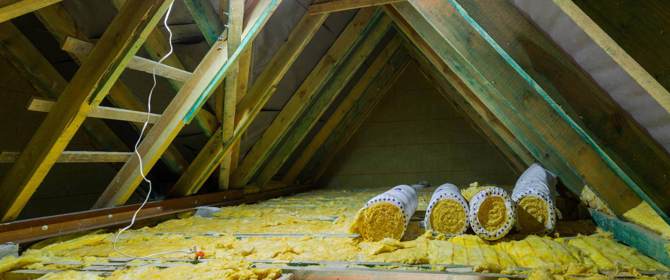Understanding Your Home Energy Bill
Research has shown that around 60% of people find their energy bills confusing. Here is your electricity bill is broken down.
March 2021
| Money Saving

Research from green energy advice portal The Green Age reveals that around 25% of heat loss can come from your roof if it is left uninsulated. Loft insulation is one of the most effective ways of insulating your home. Find out more about loft insulation below.
Loft insulation is a process that adds insulating material to your loft or roof. These materials can be spray foams, mineral wools, foils or foam boards. It helps to reduce heat loss by trapping air and preventing the transfer of temperature. As heat rises, loft insulation is an effective solution as it can keep this heat within your home.
There are two main types of loft insulation. These are:
Cold loft insulation
This type of insulation involves insulating the area right above the ceiling of the top floor in your property. Insulating materials are placed between and over the wooden joists to prevent heat from getting to your loft. This is why it is called cold loft insulation. This area will get hotter in summer, as heat will still enter through your roof.
This is the cheaper type of insulation as only one area is targeted. This can be completed by yourself in most cases. If you're unsure, it is better to consult a professional insulation service.
Warm loft insulation
Warm loft insulation involves adding material to the area under your roof. This area is specifically in between and over the rafters. This keeps the loft space warm. It is often used in homes where the loft is converted into a room or an office space.
This type of loft insulation tends to be more expensive, but it can retain a greater amount of heat. Warm loft insulation requires a professional installer and cannot be completed by yourself. Other areas such as chimneys, gable walls and party walls will also need to be insulated.
The type of loft insulation best suited to your home will depend on two factors. The type of roof your property has and your intentions for the loft space.
Type of roof
If your property has a pitched roof (a roof that slopes downwards), you’ll have both cold and warm loft insulation.
If you have a flat or dormer roof, you will have to look at alternative forms of insulation. Options include warm deck, cold deck or inverted roof insulation.
Modern dormer roofs tend to be well insulated. If your home is an older property, we recommend consulting an insulation professional. Dormer roofs are not as straightforward in comparison to other roofs.
Loft usage
Cold loft insulation tends to be a popular choice for homeowners who use their loft space for storage. The floor level raised in the loft in order to fit enough insulating material beneath it. You should leave a ventilated air gap between the insulation and the boards in order to prevent condensation.
Warm loft insulation is a common in homes where the loft space will be used as a room or office.
Can Loft Insulation Be Completed DIY?
If your loft is easy to access with no damp issues, you could install cold loft insulation process yourself. The recommended depth of blanket style insulation with glass or mineral wool is usually 250 to 270 mm, according to Energy At Home, a scheme by Bath and North East Somerset Council.
If your home already had loft insulation installed, you should check the depth. The recommended measurements have changed over the years. If the existing insulation material is less than 100mm, you should dispose of it and start over. It is likely to be old (pre 1980s) and inefficient. If it is around 100mm, it is likely to have been installed since the 1980s. You can simply top it up to meet the recommended amount.
You should only complete the insulation yourself if you are confident in doing so. We recommend seeking professional advice first.
You can visit the National Insulation Association to find a qualified installer in your area.
Costs and Savings
The cost of getting loft insulation installed into your home will depend on the scale of the work required. Loft insulation can cost between £230-£395. The Energy Saving Trust estimates that loft installation can last up to 40 years. The savings made within this time can return the installation costs multiple times.
You can save up to £250 a year on your energy bills by getting loft insulation. You could also reduce your carbon emissions by 1030kg, according to the Energy Saving Trust.
Switching energy supplier is a great way of saving energy and reducing your utility bills. Try our quick and easy comparison tool to find the best tariff for your home. Alternatively, find out more about energy saving by taking a look at our energy guides.
Related Articles
Research has shown that around 60% of people find their energy bills confusing. Here is your electricity bill is broken down.
March 2021
We’ve created this handy guide to give you some top tips for saving energy in your living room.
January 2021